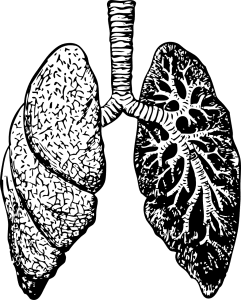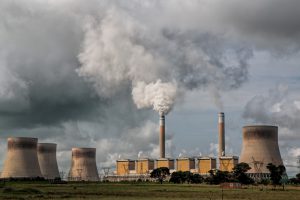When a person is diagnosed with lung cancer, the first question asked is “were they a smoker?” The reason is that most people believe you only get lung cancer from smoking cigarettes. Whereas the reality is that most lung cancer patients are not active smokers. Anyone with lungs can get it.

For non-smokers, lung cancer is considered the 6th most common cause of cancer deaths in the U.S. Researchers say the main reason for so many deaths is lack of funding. There is a difference between lung cancer with smokers and non-smokers.
The Causes
Current or former smokers are at a high risk of getting lung cancer, but non-smokers are at risk as well. About 10-15% of non-smokers develop lung cancer due to different risk factors.
- Secondhand Smoke– If you live with, or work in proximity to a smoker, then your lung cancer risk raises by 24%. Inhaling tobacco smoke is as bad as smoking the tobacco yourself. Secondhand smoke is responsible for almost 3,000 American lung cancer deaths annually.
- Radon Gas– Exposure to radon gas in your home is another contributing risk factor. Radon gas is a radioactive gas that is still, colorless, and odorless. You cannot see, smell or taste radon, but it may be a problem in your home. It forms when uranium decays in soil, rocks, and water. Radon gas accounts for a yearly 12% of American lung cancer deaths. Most, if not all, houses contain radon gas detectors. Make sure your detector is up to date, working, and serviced regularly.
- Asbestos– Asbestos is a compound that was used in home/building insulation in the past. When the asbestos fibers break loose and are released into the air, a person can inhale them. Lung cancer develops from inhaling this toxic substance, and it can also cause mesothelioma.
- Genetics– If you have a family history of lung cancer, then your risk is higher regardless of your smoking habits.
- Human Papillomavirus (HPV)– According to a small study, HPV, a sexually transmitted virus, has been found in lung cancer cells. Researchers examined 36 tumor tissue samples from patients with non-small-cell lung cancer who had never smoked. The investigators found that about 6% of tissue samples showed signs of infection from strains of HPV known to cause cancer.

If a person lives in a city, or close to a power plant, then they have a higher risk of developing lung cancer. Air Pollution– Pollution from cars and power plants is unavoidable. If a person lives in a city, or close to a power plant, then they have a higher risk of developing lung cancer. Almost 2,000 lung cancer deaths a year are due to polluted air.
The Difference in Lung Cancers
There are 2 types of lung cancer: squamous cell lung cancers and adenocarcinomas.
-
Squamous Cell Lung Cancer
– Also called epidermoid carcinoma, it occurs when abnormal lung cells multiply out of control and form a tumor. This type of cancer accounts for 25-30% of all lung cancers. It is more common in people who smoke, and it grows near the airways, causing coughing symptoms early on, including coughing up blood.
-
Adenocarcinomas
– This type of cancer forms in mucus-secreting glands throughout the body. It typically occurs in 85-90% of lung cancer cases, and is also the most common type of cancer, regardless of smoking habits, mostly found in women and young adults. It often grows in the lung’s outer regions. A person can have this type of lung cancer for a long time and show no symptoms. If you do have symptoms, the ones to watch for are shortness of breath, bone pain, and fatigue.
Lung cancer is diagnosed at a later stage for non-smokers because they usually lack symptoms. People with allergies or a respiratory infection often brush these issues off as normal. Due to the fact that lung cancer is seen as a self-caused cancer by smokers, funding and research are limited. However, to help people live, researchers are constantly looking for ways to detect lung cancer in non-smokers at an earlier stage.
Lung cancer has no prejudice; both non-smokers and smokers are susceptible to dying from it. In order to lower a non-smoker’s chances of developing it, there are preventive measures they can take. Check your home for radon gas and asbestos, get checked for HPV, and avoid being in close proximity to a smoker when you can. If you suspect something is off, like coughing more than normal, shortness of breath, bone pain, or feeling tired regularly, see your doctor and get tested. The longer you excuse your symptoms for a cold, the more cancer progresses. Do not wait to take care of yourself, you can beat lung cancer before it begins, or worsens.